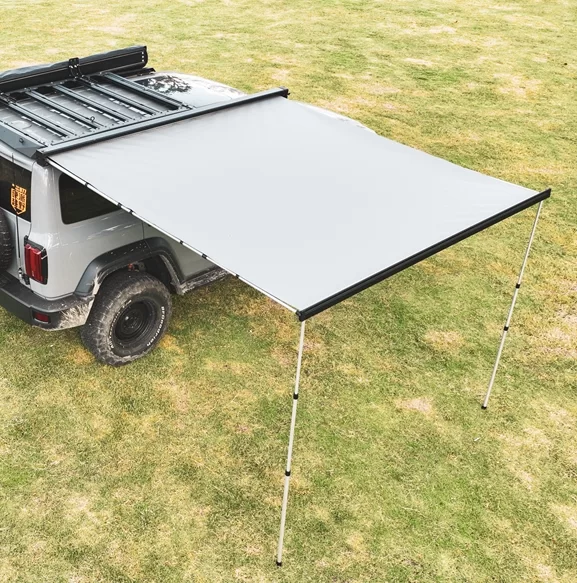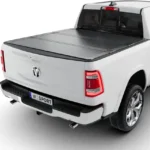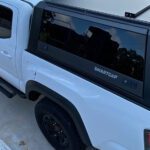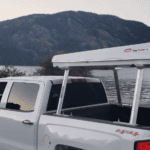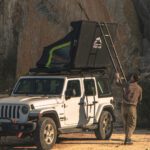Did you know proper site selection and setup are crucial for a comfortable winter camping experience? Studies show that choosing a sheltered spot and setting up a well-insulated tent can significantly reduce exposure to harsh winter elements, improving overall comfort and safety.
In this article, we’ll guide you through the essential steps to create the perfect winter camp setup, ensuring you stay warm, dry, and ready for any conditions. From selecting the right campsite to using the best gear for insulation, we’ll cover everything you need to make your winter overlanding adventure enjoyable and safe.

To set the foundation for a successful winter camp setup, it’s essential to focus on key factors that will ensure your comfort and safety in challenging conditions. By considering these crucial elements before you even begin, you can create a campsite that not only shields you from the harsh winter elements but also maximizes your ability to enjoy the experience.
1. Level Ground
When setting up your winter campsite, finding level ground is crucial for both comfort and safety. Level ground prevents discomfort, poor sleep quality, and muscle aches, which are especially important for solo campers or families who need to be well-rested for their adventures. Ensuring a stable setup also reduces the risk of accidents and gear damage in windy or snowy conditions, making your winter camping experience safer and more enjoyable.
On Vancouver Island, popular spots like Rathtrevor Beach and Goldstream Provincial Park offer well-maintained campsites with flat surfaces ideal for stable setups. In more remote areas, such as the forestry recreation sites near Campbell River, you might need to clear away snow or debris to create a level surface.
2. Sun Exposure
Choosing a campsite with good sun exposure is crucial for staying warm and comfortable during winter camping. Morning sunlight helps naturally warm your tent and gear, speeding up the drying of any moisture or frost from the night before, which is especially important for solo overlanders who rely on minimal gear. For families, consistent sun exposure throughout the day reduces the need for extra layers and heating, making the campsite more enjoyable for everyone.
On Vancouver Island, prime spots like Rathtrevor Beach and Goldstream Provincial Park are ideal for catching morning sunlight, while Tofino and Parksville Beach offer stunning sunsets with unobstructed western views. Positioning your campsite to take advantage of these natural light sources not only enhances warmth but also boosts mood, making your winter camping experience more enjoyable and comfortable.
3. Access to Emergency Services
When winter camping, ensuring close proximity to emergency services or accessible roads is vital due to rapidly changing conditions like snowstorms and icy roads. For solo overlanders, being near help can be the difference between a minor issue and a serious emergency, significantly reducing response times if you get stuck or injured. For families, the importance is even greater, as quick access to emergency services offers peace of mind, ensuring you can safely evacuate or get assistance in the event of a medical emergency or severe weather. This proximity allows you to enjoy your adventure without constant worry, knowing that help is readily available if needed.
Now that we’ve covered the essentials of choosing the right campsite for your winter adventure, it’s time to talk about the gear we recommend based on years of cold-weather overlanding experience. We want to be upfront with you, this guide focuses on comfort, not budget. Some of the items we’ll mention might be a bit pricey, and the reason we include them is because they’ve been a GAME CHANGER for us in harsh conditions. When camping in cold environments, investing in the right gear can make all the difference, turning a challenging experience into an enjoyable one.
Let’s jump right into the top 5 essential gear you’ll need for a successful and comfortable overlanding adventure during those cold months of the year.
Disclaimer: Even though we believe in the quality and value of our products, we’ve chosen not to include our brand in the following gear recommendations to keep this guide unbiased and purely informative. However, for transparency, we’ll link our products in each subheading when applicable.
A rooftop tent offers significant advantages over both traditional ground tents and campers, particularly during winter conditions. First, rooftop tents provide versatility and mobility that are hard to match. Unlike campers, which are bulkier and more challenging to maneuver in tight or rough terrains, rooftop tents can be easily mounted on most vehicles, allowing you to set up camp virtually anywhere. This is especially useful in winter when you might need to relocate quickly due to changing weather conditions. Rooftop tents are also quicker to set up and pack down than campers, which is crucial in cold environments where prolonged exposure during setup can be uncomfortable or even dangerous.
Compared to traditional ground tents, rooftop tents offer a warmer and more insulated sleeping environment. Ground tents are directly exposed to the cold, often resulting in heat loss through the ground, especially when camping on snow or frozen earth. In contrast, rooftop tents are elevated, mounted on roof racks, or crossbars, which naturally keep them off the cold ground. The base of a rooftop tent usually includes an insulated or cushioned layer that further enhances warmth. This elevation also provides better protection from moisture and cold air that can seep through the ground, making rooftop tents a much warmer and more comfortable option for winter camping.
Brand Recommendations:
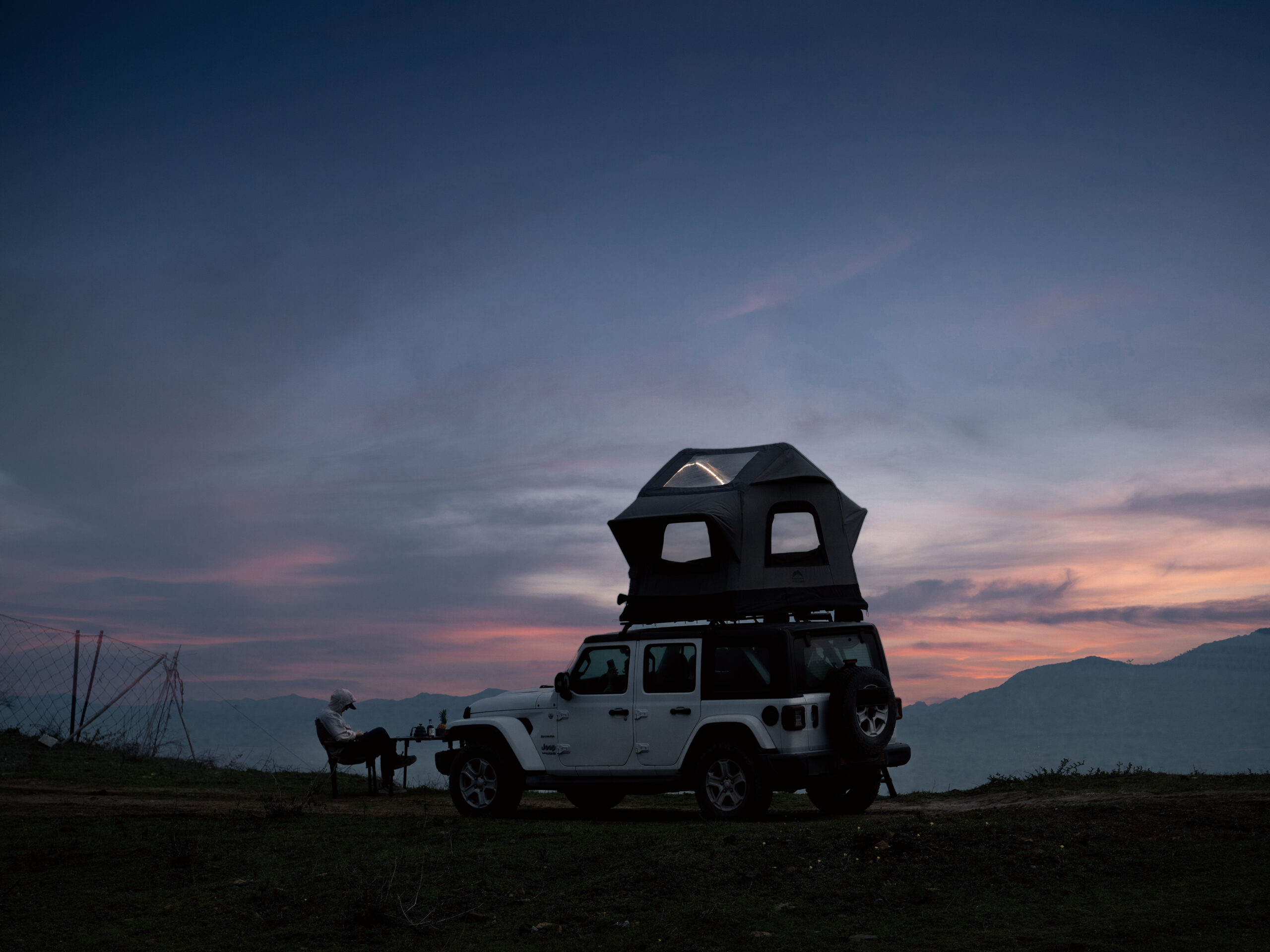
An annex room is an invaluable addition to your camping setup during the colder months. Its primary function is to provide additional shelter and protection from harsh winter elements such as wind, rain, and snow. By enclosing an area adjacent to your vehicle or rooftop tent, an annex room creates a secure space where you can perform essential tasks—such as cooking, dressing, or even socializing—without being exposed to the elements. This extra layer of protection is particularly beneficial during winter, where staying dry and shielded from the wind can significantly impact your comfort and safety.
In addition to providing shelter, an annex room also helps conserve heat, creating a more comfortable environment inside. Many annex rooms come equipped with features such as zip-up windows and durable, weather-resistant materials that enhance their effectiveness in cold weather. The enclosed space can also be used for storing gear, keeping it dry and readily accessible. In winter, when gear maintenance is crucial, having a dedicated, protected area can make all the difference. The ability to keep snow, rain, and cold air out while retaining warmth inside is why an annex room is an essential piece of gear for cold-weather camping.
Brand Recommendations:

3. Sleeping Bag and Heated Blanket
When camping in winter, the quality of your sleeping bag and blankets can make or break your trip. Not all sleeping bags are created equal, and using a standard sleeping bag from a general store might not offer the warmth needed in extreme conditions. Winter-specific sleeping bags are typically filled with down or synthetic insulation, both of which provide excellent warmth. Down-filled sleeping bags, for example, are known for their high warmth-to-weight ratio, making them ideal for cold environments. Synthetic insulation, while slightly bulkier, retains its insulating properties even when wet, making it a reliable option in damp conditions.
Heated blankets add another layer of comfort, especially during frigid nights. These blankets are designed to be plugged into your vehicle’s power source or a portable battery, providing consistent warmth throughout the night. The difference between sleeping with a regular blanket and a heated one in cold weather is substantial; the latter can prevent the cold from seeping in, allowing you to sleep comfortably and wake up refreshed. Investing in a high-quality sleeping bag and a heated blanket is not just about comfort—it’s about ensuring that you remain warm and safe during your winter camping adventure. Cold nights in the wilderness can quickly become miserable without the right gear, turning what should be an enjoyable experience into a struggle against the elements.
Brand Recommendations:
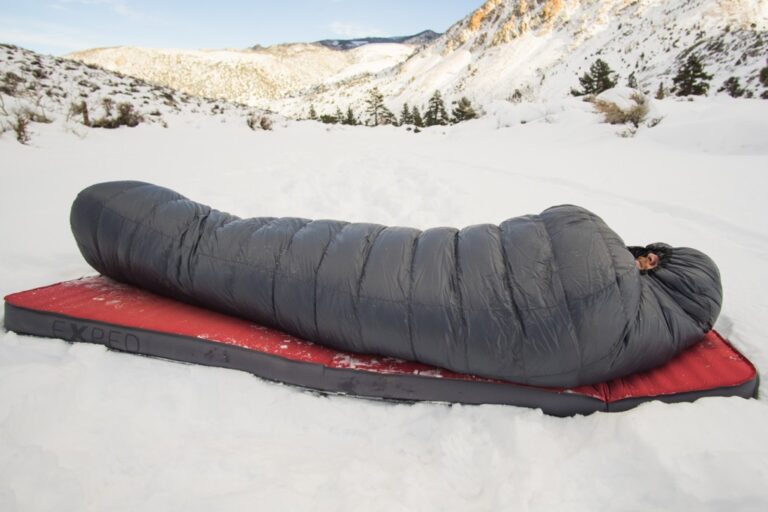
A portable power station is a must-have for winter overlanding, providing a dependable source of electricity in remote locations where traditional power sources are unavailable. These devices are designed to power everything from your essential electronics like smartphones and GPS devices to more critical equipment such as heated blankets and portable heaters. In the harsh cold, where battery life can diminish rapidly, having a reliable power station ensures that your gear stays functional, keeping you warm, connected, and safe. The versatility of these units, which can be recharged via solar panels, car chargers, or wall outlets, makes them ideal for overlanders who need a quiet and eco-friendly power source.
Moreover, portable power stations offer multiple output options, including AC, DC, and USB ports, allowing you to charge and run several devices simultaneously. This flexibility is crucial during winter camping, where maintaining warmth and communication is vital. Whether you’re heating your tent with an electric blanket or charging a satellite phone, a power station ensures that you’re never left in the cold without the energy needed to keep your equipment operational. It’s an essential investment that provides peace of mind during your cold-weather adventures.
Brand Recommendations:
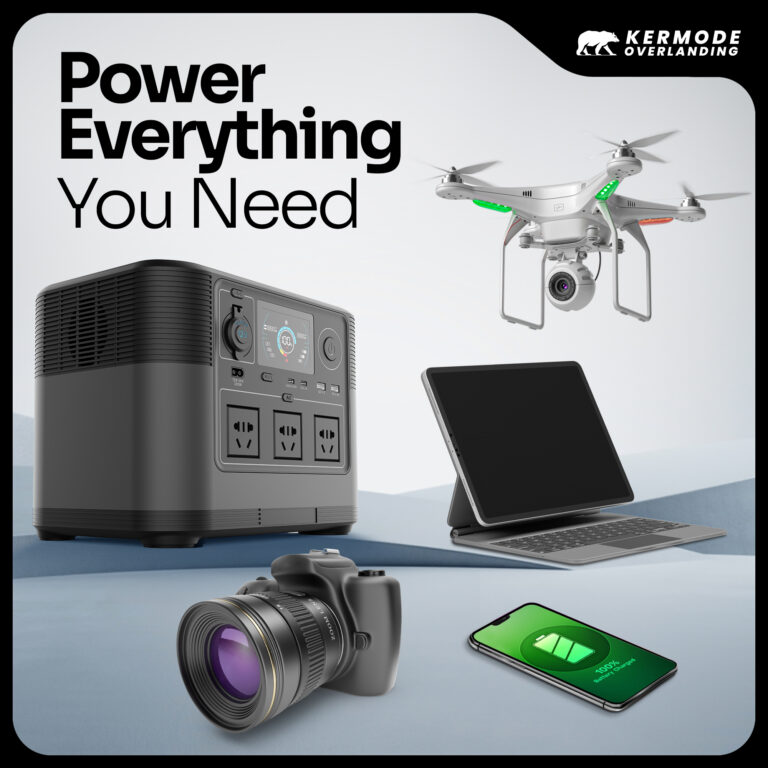
A car awning is an essential addition to your winter camping setup, offering quick and effective shelter from the elements. Whether you’re dealing with snow, rain, or biting winds, a car awning provides a protected area next to your vehicle, making it easier to cook, eat, or relax without being exposed to the harsh weather. This added shelter is especially valuable in winter, where staying dry and shielded from the wind can significantly enhance your comfort and safety. A well-designed awning can also act as a windbreak, reducing the wind chill factor and creating a more pleasant environment for your outdoor activities.
In addition to providing immediate protection, car awnings are easy to set up and pack away, making them a favorite among overlanders who value convenience and versatility. Many awnings can be equipped with side walls or annex rooms, transforming the sheltered space into a more enclosed area for additional warmth and storage. This flexibility allows you to adapt quickly to changing weather conditions, ensuring that your winter camping experience remains comfortable and safe, no matter what nature throws your way.
